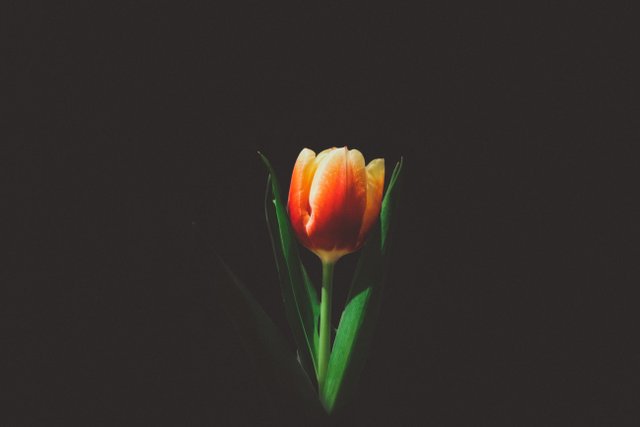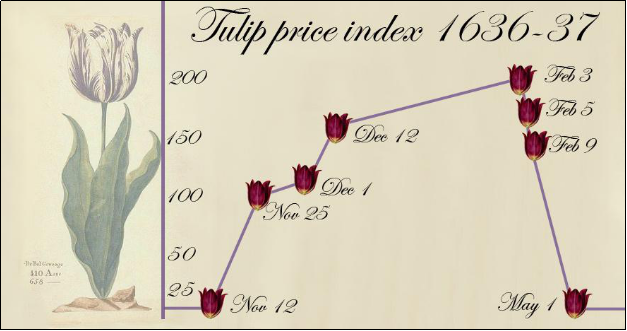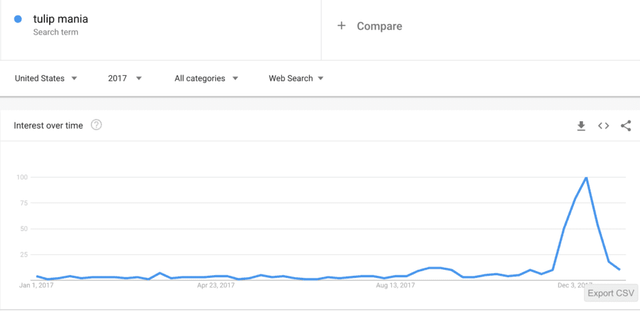Why Tulip Mania is the wrong comparison to crypto

The nature of the crypto-market is often compared to the course of the Tulip Mania during the Dutch Golden Age. However, there are some fundamental differences that invalidate this comparison.
Tulip Mania was a speculative price bubble in the Netherlands during the 1600’s. People flocked to buy futures contracts for tulips, sometimes even trading tulip bulbs up to 10x per day.

People lost the equivalent of millions of dollars overnight, and the event was marked in history as a cautionary tale to those engaging in investments based on wild speculation.
Nowadays, tulip mania is compared to the droves of people who joined in on the crypto-craze. During the end of 2017, Google searches for terms "tulip mania" and "tulip fever" sky-rocketed towards the peak of the hype. This is shown in the chart below:

There are probably some historical inaccuracies about the extent of the Mania (most tulip traders were aristocrats and merchant-class, not common folk), but in any case, it is no longer a fair or interesting comparison to the world of crypto. It is misguided.
At the heights of the bubble in early 2018, it would have been safe to classify the phenomenon as a “mania.” But the dust has settled, and the blockchain industry continues to thrive. Those who continue to call it a speculative bubble today are missing the bigger picture. While there are still people who hope to get rich through crypto, many amateur crypto traders either lost money and quit, or have realized that crypto is a much longer-term game.
Before you see sustained growth, you need what one startup founder describes as the “1000 Flowers Blooming” stage of an industry. It implies there are many ideas, projects and businesses that are required to jumpstart the whole ecosystem. After a while, most of the flowers are revealed to be weeds. But a few of them turn out to be roses, and those are the ones we hope to pick.
In the 1600’s, the Tulip Mania was a small blip of economic hubris, but it was also an indicator of a huge emerging market for the Netherlands. Today, the Netherlands commands 50% of the $10 billion global market in cut flowers. In other words, bubbles are not an inherently bad thing - they are a necessary part of growth. From this perspective, the dot-com bust is also fair comparison. It is reminiscent of Pets.com – the darling of the Internet boom. It failed but online pet stores have grown into one of the largest e-commerce sectors.
Be it Tulip Mania, internet IPOs or blockchain ICOs, throughout the 300-year history of organized financial markets, investors have found objects of speculative excess. Too much money is being thrown at fake or nonviable ICOs, but others will own their markets one day. I didn’t drink the Internet bubble kool-aid but I certainly would have liked to have sniffed those tulips!
Originally posted on Crypto Insider : https://cryptoinsider.com/tulip-mania-wrong-comparison-crypto/
The main difference between the two is that, even at the tip of 2017 bubble, the level of doubt regarding bitcoin was extraordinarily high. The thing about true bubbles is that they are more powerful the more people are sure of the investment. This applied to the tulip bubble: it developed over years of price increase. The more time the price increase lasted, the more everyone was sure that it wasn't a bubble, but a natural price increase. This is always the point at which the bubble becomes dangerous.
The same happened leading up to the 2008 crisis, as is so clearly shown by The Big Short: everyone was 100% sure that there was nothing wrong with the housing market, absolutely 100%. That is the problem. The same happened in 1929, it's always the same.
The clearest telltale sign of a bubble is this absolute certainty, and bitcoin never had that. Sure, the price collapsed, but the upward movement was an organic one, when people were trying to grasp what the value of bitcoin would be. This process is still continuing. Many people in the community still believe that bitcoin will be worth not only 20k USD, but even more. That's not what happens after a bubble, when everyone realizes that everything was worthless.